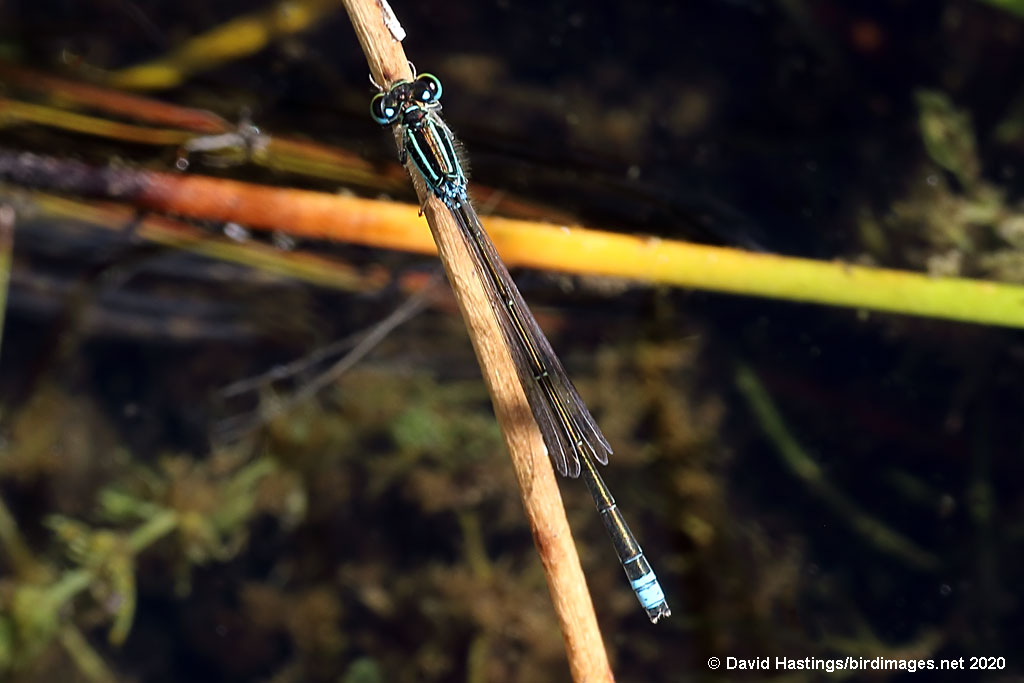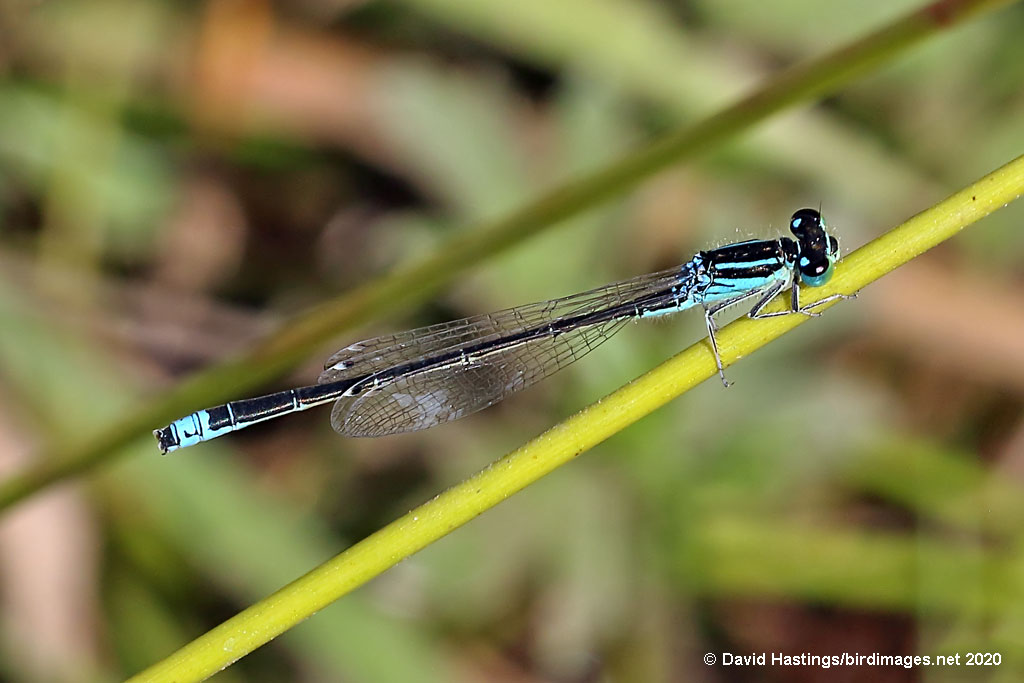Scarce Blue-tailed Damselfly (Ischnura pumilio) | Species | ||||||||||||||||||||||||||||
Male. Taken at Banbury, Oxon., on July 17th 2020. (© David Hastings) (1/100th sec at f13. Click image for larger version) Male. Taken at Banbury, Oxon., on July 17th 2020. (© David Hastings) (1/400th sec at f13. Click image for larger version) DescriptionL: 26 - 31 mm; WS: 28 - 36 mm The Scarce Blue-tailed Damselfly is a diminutive but effective disperser, which quickly colonises pioneer habitats. In the male, the blue tail-light is shifted to S9. The pterostigma are two-tone and diamond-shaped, and are at least twice as long as they are wide. The species can be found from the Azores and Madeira to Mongolia, and can be locally abundant. In the British Isles it is found in the New Forest, southwest England, Wales and northern and western parts of Ireland. It can be found in recently created habitats with sparse vegetation (eq quarries), small or temporary ponds, springs and ditches. In southern Europe the flight season is March to October, with at least two generations a year. In the north, there is only one generation, from the end of May to mid-September. The female oviposits alone, and eggs are laid in emergent grasses and rushes. They hatch after 2-3 weeks and the nymphs live in silt. They take at least a year to mature. This is a scarce and local species in the British Isles, and is on the UK Red Data List. Earliest UK sighting: 17th July ; Latest UK sighting: 21st July Sightings
| |||||||||||||||||||||||||||||


